1. de Onis M, Blössner M, Borghi E. Global prevalence and trends of overweight and obesity among preschool children. Am J Clin Nutr. 2010; 92:1257–1264. PMID:
20861173.
2. Lakshman R, Elks CE, Ong KK. Childhood obesity. Circulation. 2012; 126:1770–1779. PMID:
23027812.
3. Lee HA, Lee WK, Kong KA, Chang N, Ha EH, Hong YS, Park H. The effect of eating behavior on being overweight or obese during preadolescence. J Prev Med Public Health. 2011; 44:226–233. PMID:
22020188.

4. Birch LL, Fisher JO. Development of eating behaviors among children and adolescents. Pediatrics. 1998; 101(Suppl 2):539–549. PMID:
12224660.

5. Kim SY, Cha SM. Evaluation of dietary behaviors of preschool children in Seoul and Gyeonggi-do associated with the level of parents’ health consciousness: using nutrition quotient for preschoolers (NQ-P). Nutr Res Pract. 2021; 15:248–265. PMID:
33841728.

6. Matwiejczyk L, Mehta K, Scott J, Tonkin E, Coveney J. Characteristics of effective interventions promoting healthy eating for pre-schoolers in childcare settings: an umbrella review. Nutrients. 2018; 10:293. PMID:
29494537.

7. Monterrosa EC, Frongillo EA, Drewnowski A, de Pee S, Vandevijvere S. Sociocultural Influences on Food Choices and Implications for Sustainable Healthy Diets. Food Nutr Bull. 2020; 41:59S–73S. PMID:
33356592.

8. Lee HJ, Kim JH, Song S. Assessment of dietary behaviors among preschoolers in Daejeon: using nutrition quotient for preschoolers (NQ-P). J Nutr Health. 2019; 52:194–205.

9. Han G, Yang E. Dietary behavior and nutrition quotient (NQ) scores according to the weight status of preschool children in Gwangju metropolitan city. J Korean Soc Food Cult. 2021; 36:412–420.
10. Jeong I, Song S. Relationship between the dietary behavior of young children and their mothers in Daejeon, Korea using the nutrition quotient for preschoolers and adults. Korean J Community Nutr. 2021; 26:12–22.

11. Lee CY, Ledoux TA, Johnston CA, Ayala GX, O’Connor DP. Association of parental body mass index (BMI) with child’s health behaviors and child’s BMI depend on child’s age. BMC Obes. 2019; 6:11. PMID:
30984404.

12. Townsend N, Foster C. Developing and applying a socio-ecological model to the promotion of healthy eating in the school. Public Health Nutr. 2013; 16:1101–1108. PMID:
22014870.

13. Scaglioni S, De Cosmi V, Ciappolino V, Parazzini F, Brambilla P, Agostoni C. Factors influencing children’s eating behaviours. Nutrients. 2018; 10:706. PMID:
29857549.

14. Mahmood L, Flores-Barrantes P, Moreno LA, Manios Y, Gonzalez-Gil EM. The influence of parental dietary behaviors and practices on children’s eating habits. Nutrients. 2021; 13:1138. PMID:
33808337.

15. Nicklas TA, Baranowski T, Baranowski JC, Cullen K, Rittenberry L, Olvera N. Family and child-care provider influences on preschool children’s fruit, juice, and vegetable consumption. Nutr Rev. 2001; 59:224–235. PMID:
11475448.

16. Lee DY, Roh HW, Kim SJ, Park EJ, Yoo H, Suh S, Shin Y. Trends in digital media use in Korean preschool children. J Korean Med Sci. 2019; 34:e263. PMID:
31650718.

17. Demers-Potvin É, White M, Potvin Kent M, Nieto C, White CM, Zheng X, Hammond D, Vanderlee L. Adolescents’ media usage and self-reported exposure to advertising across six countries: implications for less healthy food and beverage marketing. BMJ Open. 2022; 12:e058913.

18. Gilliland JA, Rangel CY, Healy MA, Tucker P, Loebach JE, Hess PM, He M, Irwin JD, Wilk P. Linking childhood obesity to the built environment: a multi-level analysis of home and school neighbourhood factors associated with body mass index. Can J Public Health. 2012; 103(Suppl 3):eS15–eS21.

19. Qutteina Y, De Backer C, Smits T. Media food marketing and eating outcomes among pre-adolescents and adolescents: a systematic review and meta-analysis. Obes Rev. 2019; 20:1708–1719. PMID:
31468652.

20. Norman J, Kelly B, McMahon AT, Boyland E, Chapman K, King L. Remember me? Exposure to unfamiliar food brands in television advertising and online advergames drives children’s brand recognition, attitudes, and desire to eat foods: a secondary analysis from a crossover experimental-control study with randomization at the group level. J Acad Nutr Diet. 2020; 120:120–129. PMID:
31302037.

21. Lee JS, Kang MH, Kwak TK, Chung HR, Kwon S, Kim HY, Hwang JY, Choi YS. Development of nutrition quotient for Korean preschoolers (NQ-P): Item selection and validation of factor structure. J Nutr Health. 2016; 49:378–394.

22. Skinner E, Johnson S, Snyder T. Six dimensions of parenting: a motivational model. Parent Sci Pract. 2005; 5:175–235.

23. Birch LL, Fisher JO, Grimm-Thomas K, Markey CN, Sawyer R, Johnson SL. Confirmatory factor analysis of the Child Feeding Questionnaire: a measure of parental attitudes, beliefs and practices about child feeding and obesity proneness. Appetite. 2001; 36:201–210. PMID:
11358344.

24. Nowicka P, Sorjonen K, Pietrobelli A, Flodmark CE, Faith MS. Parental feeding practices and associations with child weight status. Swedish validation of the Child Feeding Questionnaire finds parents of 4-year-olds less restrictive. Appetite. 2014; 81:232–241. PMID:
24972134.

25. Ward D, Hales D, Haverly K, Marks J, Benjamin S, Ball S, Trost S. An instrument to assess the obesogenic environment of child care centers. Am J Health Behav. 2008; 32:380–386. PMID:
18092898.

26. Vaughn AE, Mazzucca S, Burney R, Østbye T, Benjamin Neelon SE, Tovar A, Ward DS. Assessment of nutrition and physical activity environments in family child care homes: modification and psychometric testing of the environment and policy assessment and observation. BMC Public Health. 2017; 17:680. PMID:
28851348.

27. Ohri-Vachaspati P, DeLia D, DeWeese RS, Crespo NC, Todd M, Yedidia MJ. The relative contribution of layers of the social ecological model to childhood obesity. Public Health Nutr. 2015; 18:2055–2066. PMID:
25374257.

28. Kim SK, Kim J, Kim H, An S, Lim Y, Park H. Association between food-related media program watching and dietary behaviors in Korean adolescents. Korean Public Health Res. 2020; 46:31–46.
29. Liberali R, Kupek E, Assis MA. Dietary patterns and childhood obesity risk: a systematic review. Child Obes. 2020; 16:70–85. PMID:
31742427.

30. Sirkka O, Fleischmann M, Abrahamse-Berkeveld M, Halberstadt J, Olthof MR, Seidell JC, Corpeleijn E. Dietary patterns in early childhood and the risk of childhood overweight: the GECKO Drenthe birth cohort. Nutrients. 2021; 13:2046. PMID:
34203797.

31. Fernández-Alvira JM, Bammann K, Eiben G, Hebestreit A, Kourides YA, Kovacs E, Michels N, Pala V, Reisch L, Russo P, et al. Prospective associations between dietary patterns and body composition changes in European children: the IDEFICS study. Public Health Nutr. 2017; 20:3257–3265. PMID:
28879834.

32. Rashid V, Streppel MT, Engberink MF, Weijs PJ, Nicolaou M, Verhoeff AP. Weight development between age 5 and 10 years and its associations with dietary patterns at age 5 in the ABCD cohort. BMC Public Health. 2020; 20:427. PMID:
32238152.

33. Reilly JJ, Armstrong J, Dorosty AR, Emmett PM, Ness A, Rogers I, Steer C, Sherriff A. Avon Longitudinal Study of Parents and Children Study Team. Early life risk factors for obesity in childhood: cohort study. BMJ. 2005; 330:1357. PMID:
15908441.

34. Verduci E, Bronsky J, Embleton N, Gerasimidis K, Indrio F, Köglmeier J, de Koning B, Lapillonne A, Moltu SJ, Norsa L, et al. Role of dietary factors, food habits, and lifestyle in childhood obesity development: a position paper from the European Society for Paediatric Gastroenterology, Hepatology and Nutrition Committee on Nutrition. J Pediatr Gastroenterol Nutr. 2021; 72:769–783. PMID:
33720094.

35. Bae JM, Kang MH. Age difference in association between obesity and nutrition quotient scores of preschoolers and school children. J Nutr Health. 2016; 49:447–458.

36. Kim JW, Ha AW, Yoo KS. Mothers’ nutrition knowledge and their preschoolers’ obesity and dietary habits. J Korean Soc Food Cult. 2008; 23:646–654.
37. Koivuniemi E, Laitinen K. Overweight and obesity associates with diet quality in mothers of newborn babies. Curr Dev Nutr. 2022; 6(Suppl 1):678–678.

38. Coto J, Pulgaron ER, Graziano PA, Bagner DM, Villa M, Malik JA, Delamater AM. Parents as role models: associations between parent and young children’s weight, dietary intake, and physical activity in a minority sample. Matern Child Health J. 2019; 23:943–950. PMID:
30656547.

39. Birch LL, Fisher JO. Mothers’ child-feeding practices influence daughters’ eating and weight. Am J Clin Nutr. 2000; 71:1054–1061. PMID:
10799366.

40. Ahn J, Shin N. The use of child care center for infants of dual-working families in Korea. Child Youth Serv Rev. 2013; 35:1510–1519.

41. Leis A, Ward S, Vatanparast H, Humbert ML, Chow AF, Muhajarine N, Engler-Stringer R, Bélanger M. Effectiveness of the Healthy Start-Départ Santé approach on physical activity, healthy eating and fundamental movement skills of preschoolers attending childcare centres: a randomized controlled trial. BMC Public Health. 2020; 20:523. PMID:
32306943.

42. Reitzel LR, Okamoto H, Hernandez DC, Regan SD, McNeill LH, Obasi EM. The built food environment and dietary intake among African-American adults. Am J Health Behav. 2016; 40:3–11. PMID:
26685808.

43. Kebede A, Jirström M, Worku A, Alemu K, Berhane HY, Turner C, Ekström EC, Berhane Y. Residential food environment, household wealth and maternal education association to preschoolers’ consumption of plant-based vitamin a-rich foods: the EAT Addis survey in Addis Ababa. Nutrients. 2022; 14:296. PMID:
35057477.

44. Duran AC, de Almeida SL, Latorre MR, Jaime PC. The role of the local retail food environment in fruit, vegetable and sugar-sweetened beverage consumption in Brazil. Public Health Nutr. 2016; 19:1093–1102. PMID:
26054646.

45. Gangrade N, St Fleur K, Leak TM. Factors that influence snacking behaviors of adolescents from urban communities: a qualitative study. J Nutr Educ Behav. 2022; 54:521–531. PMID:
35351357.

46. Dake FA, Thompson AL, Ng SW, Agyei-Mensah S, Codjoe SN. The local food environment and body mass index among the urban poor in Accra, Ghana. J Urban Health. 2016; 93:438–455. PMID:
27091736.

47. Kang E, Lee J, Kim KH, Yun YH. The popularity of eating broadcast: Content analysis of “mukbang” YouTube videos, media coverage, and the health impact of “mukbang” on public. Health Informatics J. 2020; 26:2237–2248. PMID:
31992111.
48. Tan L, Ng SH, Omar A, Karupaiah T. What’s on YouTube? A case study on food and beverage advertising in videos targeted at children on social media. Child Obes. 2018; 14:280–290. PMID:
29985649.

49. Kim J, Choi S, Kim H, An S. Binge drinking and obesity-related eating: the moderating roles of the eating broadcast viewing experience among Korean adults. Int J Environ Res Public Health. 2021; 18:8066. PMID:
34360359.
50. Livingstone MB, Robson PJ. Measurement of dietary intake in children. Proc Nutr Soc. 2000; 59:279–293. PMID:
10946797.

51. Livingstone MB, Robson PJ, Wallace JM. Issues in dietary intake assessment of children and adolescents. Br J Nutr. 2004; 92(Suppl 2):S213–S222. PMID:
15522159.
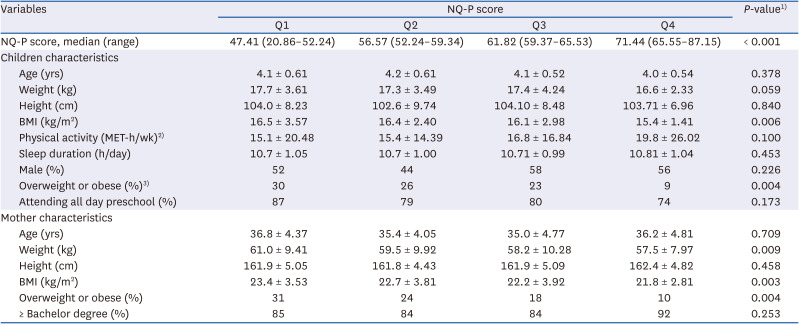
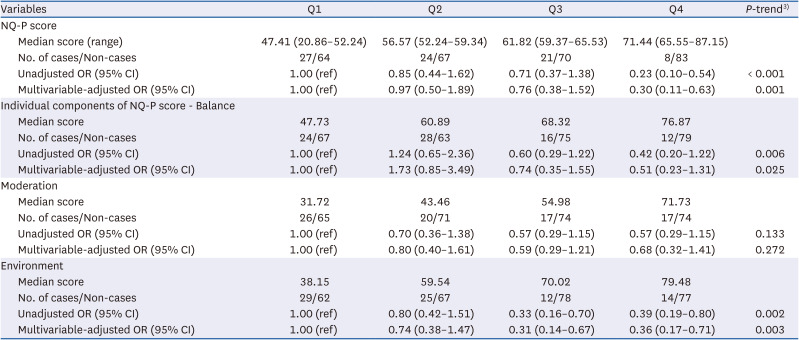
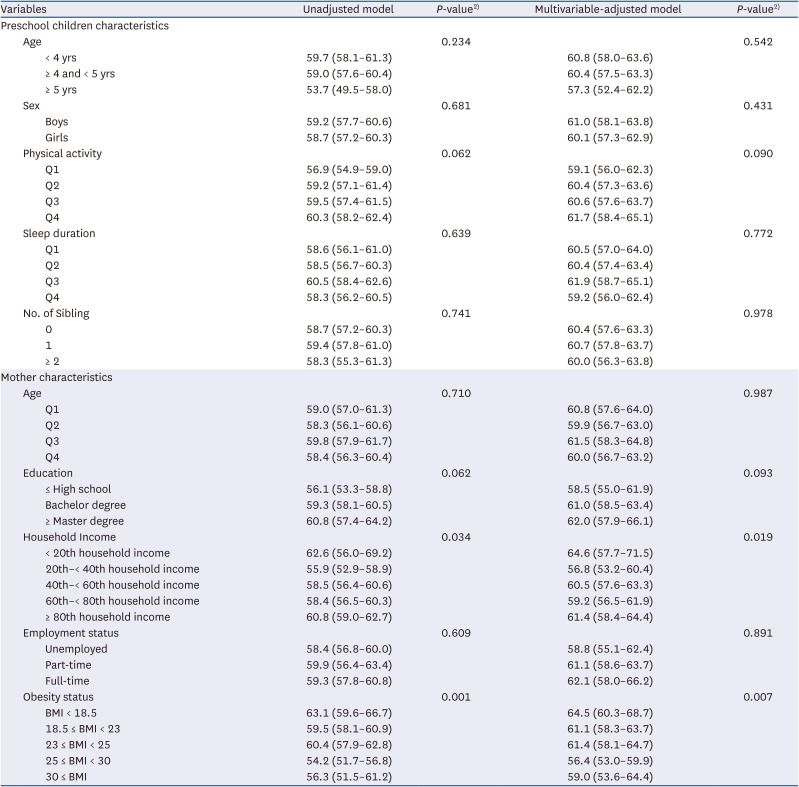
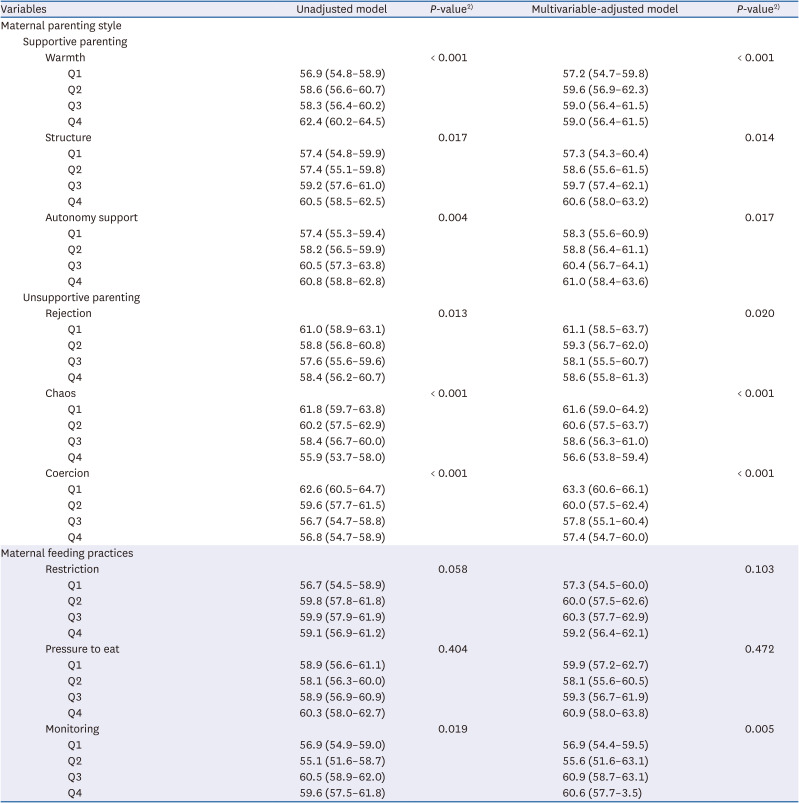
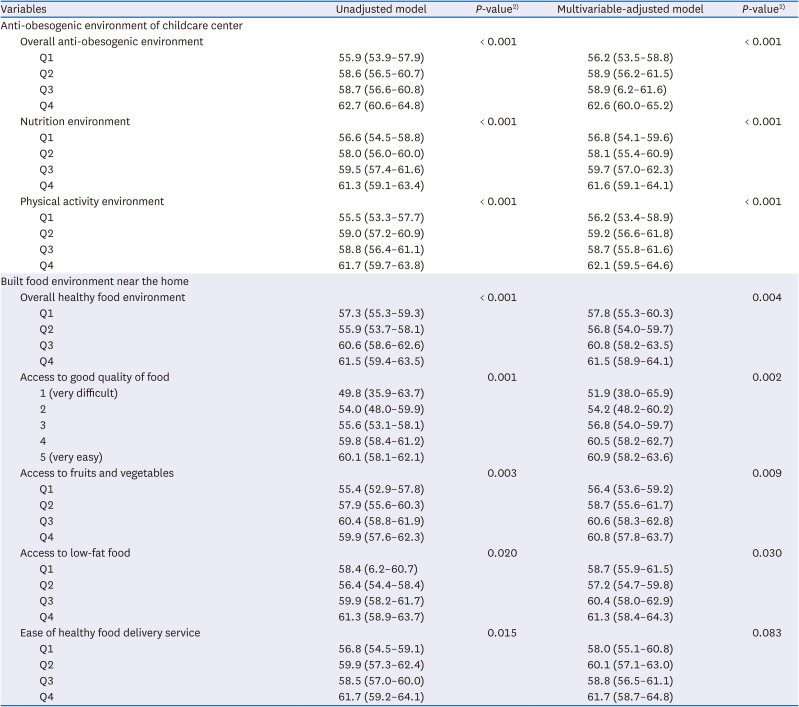





 PDF
PDF Citation
Citation Print
Print



 XML Download
XML Download